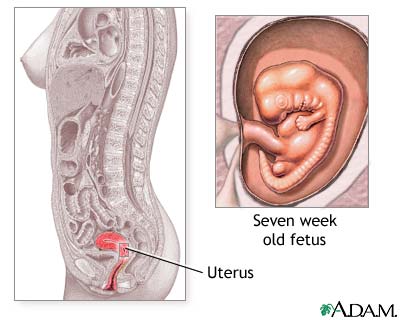Pregnancy and tanning bed use
Pregnancy and tanning bed use is an important concern that perhaps too many women ignore.
Besides the fact that many pregnant women report feeling that their skin is much more sensitive than normal, there is the issue of how the fetus itself may be affected?
 Does tanning when pregnant affect the foetus?
Does tanning when pregnant affect the foetus?Pregnancy and tanning bed use with sensitive skin
Being exposed to a sunbed's UV rays, or in fact the sun's UV rays, becomes a potential challenge if you discover your skin is that much more sensitive when you're pregnant.
Essentially, your skin is far more likely to burn or age prematurely.
Hormonal effects on face pigmentation:
The fluctuation in hormones during pregnancy, besides knocking your moods all over the place, seem to make many women more susceptible to dark coloration or deepening skin pigmentation.
These appear as darkened, irregular patches, mostly on the face and are known as chloasma.
By exposing this condition to UV rays through sunbathing or using a tanning bed, the pigmentation is likely to increase in color, in deeper contrast to your natural skin color.
Pregnancy and tanning beds: UV ray damage
 UVA protection is even more important during pregnancy
UVA protection is even more important during pregnancyBoth the UVA and UVB rays found in natural sunlight are present in sunbeds, but usually in different concentrations.
So, contrary to what many people think, obtaining a tan by using a sunbed is not at all safer than tanning in the direct sunlight. On the contrary.
In many instances, sunbeds generate far higher doses of UV rays than you would typically encounter when outdoors in the wonderful midday sun. This makes pregnancy and tanning bed use an even more potentially dangerous mix.
Your eyes are also hugely susceptible to damage from the UV rays in sunbeds and cause problems such as irritation, conjunctivitis or even cataracts, particularly if you don't wear protective eye goggles.
Pregnancy and tanning beds: Effect on your unborn baby

Some studies claim there is a link between a folic acid deficiency and an increase in exposure to UV rays. The reason behind this claim is predominantly because UV rays are acknowledged to be able to break down folic acid.
However, there does not appear to be any conclusive tests and therefore concrete evidence, that UV rays can affect the fetus.
Because folic acid is a very important factor in the development cycle of a baby, many people rather take precautions and forego excessive exposure to UV rays.
Folic acid is formed during the first 13 weeks of pregnancy and is especially important to the formation of the brain and spinal cord, and in preventing neural tube defects such as spina bifida.
It therefore seems reasonably logical in my mind, and quite easy actually, to take precautions and not overdo UV exposure.
Experts concerns of using Tanning beds when Pregnant
There are some mid-wives, obstetricians and gynecologists however, that are outspoken about their concerns about pregnancy and tanning bed usage.
In the first trimester of pregnancy, they pretty much concur as health experts in advising pregnant women, not to participate in any activity that may raise their body temperature over 102 Fahrenheit or more for several hours.
Therefore, the following activities are recommended to avoid:
- languishing in hot tubs
- overdoing a sauna session
- lying in tanning beds
It is this overheating of the mother's body that is associated with spinal malformations, and is referred to as hyperthermia.
Tanning beds are limited to 100 degrees Fahrenheit by legislation in both the USA and Canada. However, don't assume organizations adhere to legislative requirements and make sure you check!
It is also highly recommended when tanning while pregnant, either indoors or outdoors, that you stay cool and hydrated and drink plenty fluids. This will enable you to avoid any light-headedness and dehydration.




New! Comments
Have your say... please leave me a comment in the box below.